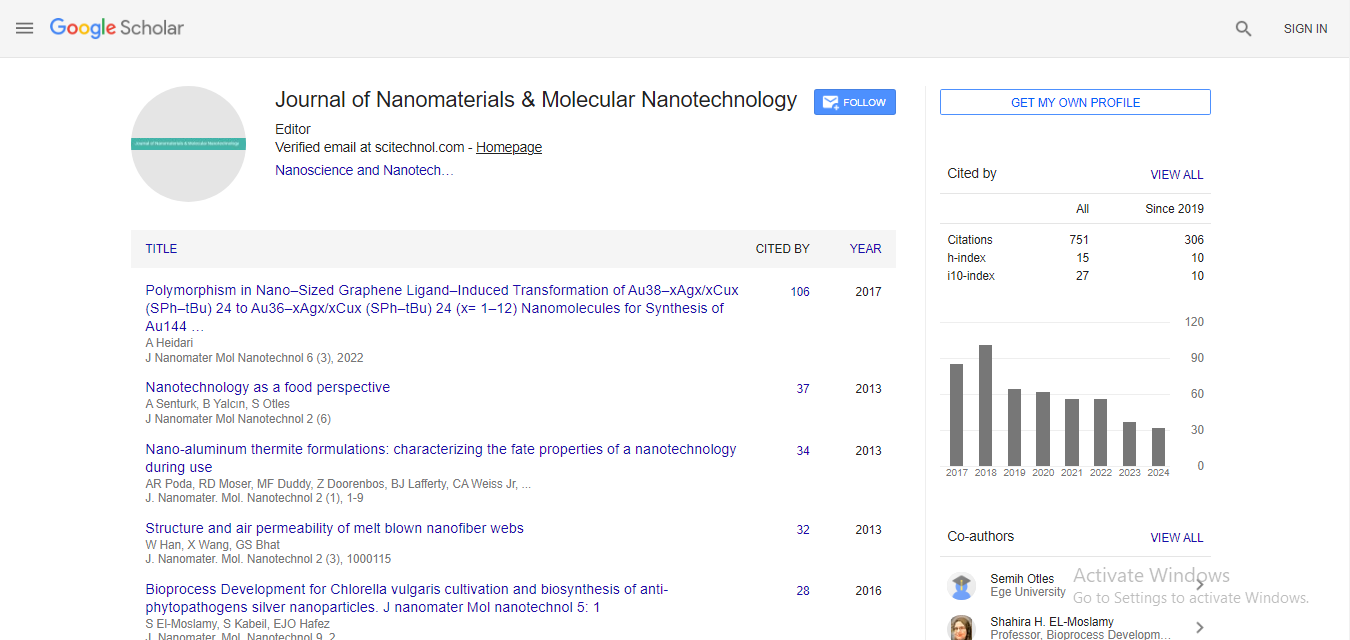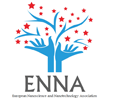Perspective, J Nanomater Mol Nanotechnol Vol: 13 Issue: 6
Nanotoxicology in Biomedical Applications: Balancing Innovation and Safety
Hyeon Namkyu*
1Department of Nano-Science, Jeonbuk National University, Jeonju, Republic of Korea
*Corresponding Author: Hyeon Namkyu,
Department of Nano-Science, Jeonbuk
National University, Jeonju, Republic of Korea
E-mail: nam.hyeon@12.jnu.kr
Received date: 22 November, 2024, Manuscript No. JNMN-24-156146;
Editor assigned date: 25 November, 2024, PreQC No. JNMN-24-156146 (PQ);
Reviewed date: 09 December, 2024, QC No. JNMN-24-156146;
Revised date: 16 December, 2024, Manuscript No. JNMN-24-156146 (R);
Published date: 24 December, 2024, DOI: 10.4172/2324-8777.1000448
Citation: Namkyu H (2024) Nanotoxicology in Biomedical Applications: Balancing Innovation and Safety. J Nanomater Mol Nanotechnol 13:6.
Description
Nanotechnology has revolutionized the field of biomedicine by offering innovative solutions for drug delivery, diagnostics and therapeutic interventions. However, the integration of nanomaterials into biomedical applications brings forth significant challenges related to safety and toxicity. Nanotoxicology, the study of the toxicological properties of nanomaterials, is major in addressing these challenges and ensuring that the benefits of nanotechnology are realized without compromising human health and safety.
The unique properties of nanoparticles, such as their high surfaceto- volume ratio, small size and enhanced reactivity, make them invaluable in biomedical applications. These same properties, however, raise concerns about their interactions with biological systems. Nanoparticles can cross biological barriers, interact with cellular components and potentially induce adverse effects at the molecular, cellular and systemic levels. Understanding these interactions is important for predicting and reducing potential risks associated with their use.
In drug delivery, nanoparticles have shown immense potential in improving the efficacy and specificity of therapeutic agents. Liposomes, polymeric nanoparticles and lipid nanoparticles are now routinely used in targeted drug delivery systems, reducing off-target effects and enhancing therapeutic outcomes. For example, lipid nanoparticles have been instrumental in the development and delivery of mRNA-based vaccines. Despite these advancements, the safety profile of these materials requires careful evaluation. The potential for nanoparticle accumulation in organs such as the liver, spleen and kidneys, as well as their ability to induce inflammatory or immune responses, highlights the need for comprehensive toxicological studies.
Similarly, the use of nanotechnology in diagnostic imaging and biosensing has opened new avenues for early disease detection and monitoring. Quantum dots, gold nanoparticles and iron oxide nanoparticles are widely used in imaging modalities such as fluorescence imaging and Magnetic Resonance Imaging (MRI). While these applications offer enhanced sensitivity and specificity, concerns about the long-term stability, biodegradability and toxicity of these nanomaterials remain unresolved. Studies have shown that certain nanoparticles can generate Reactive Oxygen Species (ROS), leading to oxidative stress and cellular damage, necessitating the development of safer alternatives or modifications to existing materials.
The complexity of nanotoxicology lies in the diverse nature of nanomaterials. Variations in size, shape, surface charge and coating can significantly influence their biological interactions and toxicity profiles. For instance, smaller nanoparticles are more likely to penetrate cellular membranes but may also exhibit higher cytotoxicity. Surface modifications, such as Poly Ethylene Glycol (PEG) coating, can enhance biocompatibility but may trigger immune reactions in some individuals. This variability highlights the importance of characterizing nanoparticles thoroughly before their biomedical application.
Regulatory frameworks for nanomaterials in biomedical applications are still evolving, presenting another layer of complexity. Traditional toxicity assessment methods may not be sufficient for nanoparticles, given their unique behaviors. These methodologies enable a deeper understanding of the mechanisms underlying nanoparticle-induced toxicity and facilitate the design of safer nanomaterials.
Public perception and acceptance of nanotechnology in medicine also play a major role in its advancement. Transparency in reporting the risks and benefits of nanomaterials is essential to building trust among key players, including patients, healthcare providers and regulators. Education and awareness campaigns can help association between scientific innovation and public understanding, promote a balanced perspective on the use of nanotechnology in healthcare.
Collaborative efforts between researchers, industry and regulatory bodies are essential to address the challenges posed by nanotoxicology. Developing standardized protocols for toxicity assessment, establishing databases for nanoparticle characterization and promoting interdisciplinary research are key steps toward ensuring the safe and effective use of nanotechnology in biomedicine. Additionally, adopting a precautionary approach in the early stages of nanomaterial development can help identify potential risks and guide the design of safer alternatives.
Conclusion
Nanotoxicology is an integral aspect of advancing nanotechnology in biomedical applications. Balancing innovation with safety requires a multidisciplinary approach that involves demanding toxicological assessments, regulatory oversight and public engagement. By addressing the challenges associated with nanoparticle toxicity, the biomedical field can apply the full potential of nanotechnology to improve human health while minimizing risks. The continued evolution of nanotoxicology will be instrumental in shaping a future where nanotechnology is both a transformative and safe force in medicine.
 Spanish
Spanish  Chinese
Chinese  Russian
Russian  German
German  French
French  Japanese
Japanese  Portuguese
Portuguese  Hindi
Hindi 



